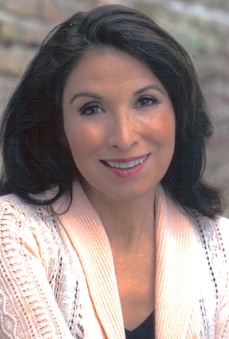The following book review was written by Tim Giago, Publisher and Editor Emeritus
of the Native Sun News. All content © Native Sun News.
 Hattie Kauffman
Hattie Kauffman
Falling into Place: A book by Hattie Kauffman
BOOK REVIEW by Tim Giago
Every Native American journalist that was around in the 1970s knows Hattie Kauffman. If they don’t know her personally, they surely know of her.
Hattie is a news reporter of Nez Perce heritage who rose through the ranks of network television and set many “firsts.” She was the first Native American on-air journalist to do national television news stand-ups. She was a news correspondent for Good Morning America and later excelled on the news at CBS.
On the jacket of her new book “Falling into Place” it reads that “Hattie has interviewed presidents, Olympians, astronauts, and Oscar winners. She’s covered wildfires and murder trials and delved into personal interest stories.”
It goes on: “In this beautifully written memoir, you’ll get an inside look into the events that shaped this remarkable woman who thought she’d left the ghosts of childhood behind her. But when her world came crashing down one autumn day, she was forced to face all that she had been running from. What she learned about herself surprised her.”
There are only brief glimpses into how Hattie rose through the ranks of the tough world of television reporting to reach a pinnacle no other Native American has reached before or since. Hattie writes about her first encounter with a radio producer who was looking for a Native American to do a short radio broadcast on a radio station in Minneapolis and how she stood up and volunteered for the job.
But mostly her book is about the trials and tribulations of her childhood as an Indian torn between the Nez Perce Indian Reservation and cities like Seattle, Washington where her parents, dyed-in-the-wool alcoholics, ranged back and forth dragging her and her six siblings along behind them.
But the thing that tore her world apart and brought her to near madness was the request for a divorce by her husband of 17 years, a request that apparently came out of the blue for her. She goes on to write about her fears and triumphs while going through the divorce. She mentions a son and daughter she had, but never elaborates. Perhaps it is because she wishes to shelter them from any undue publicity.
Hattie writes about her first marriage as a teenager to a boy who grows up to be a wife-beater and an alcoholic. She writes that it is strange that daughters of alcoholics often grow up to marry alcoholics. In their dual roles as alcoholics Hattie remembers getting beaten so severely that she had to be admitted to a hospital. At least through a haze of drunken deliriums, she barely remembers. She eventually realizes that alcohol is a destroyer of lives and stops drinking.
Throughout the book Hattie is torn between her beliefs that Christianity if not for Indians, but it comes to the day when she is at her lowest that she feels an invisible hand touch her head. This opens up her life in a new direction and she embraces Christianity and Jesus.
Many Native Americans reading “Falling into Place” will immediately identify with the extreme poverty of Hattie’s childhood. Of not having anything to eat sometimes even for days and of boiling water for a small cup of mush that had to feed seven children.
Hattie went to public school and experienced the racial prejudice so prevalent in the 1960s in communities with small Native populations.
She found her solace and happiness by embracing a Christian Jesus, but not all Native Americans will agree with her on this topic. Many have turned their backs on Christianity and found their own solace and happiness in their traditional spirituality, a spirituality that was torn from them and their ancestors by the missionaries preaching the Doctrine of Christianity.
I can empathize with Hattie on several levels, except on her total submission and commitment to Jesus Christ. Perhaps the Wakan Tanka or Tunkasila of the Lakota is a far cry from the Bible and Jesus, but it is a spiritual belief that pre-dates Christianity.
But Hattie found her way back from the brink of self-destruction by embracing a religion foreign to early Native America and if that was where she found shelter, more power to her because each of us has to find a commitment to self-assurance and devotion in our own way.
If you are in the Native media or not, I recommend that you read Hattie’s book because in real life, I found her to be an unassuming Native woman who never turned her nose up at anyone even though she rose to the pinnacle of media success. She always had a warm “hello” or a hug for her fellow Native American journalists.
Tim Giago can be reached at editor@nsweekly.com
Copyright permission by Native Sun News
Join the Conversation



